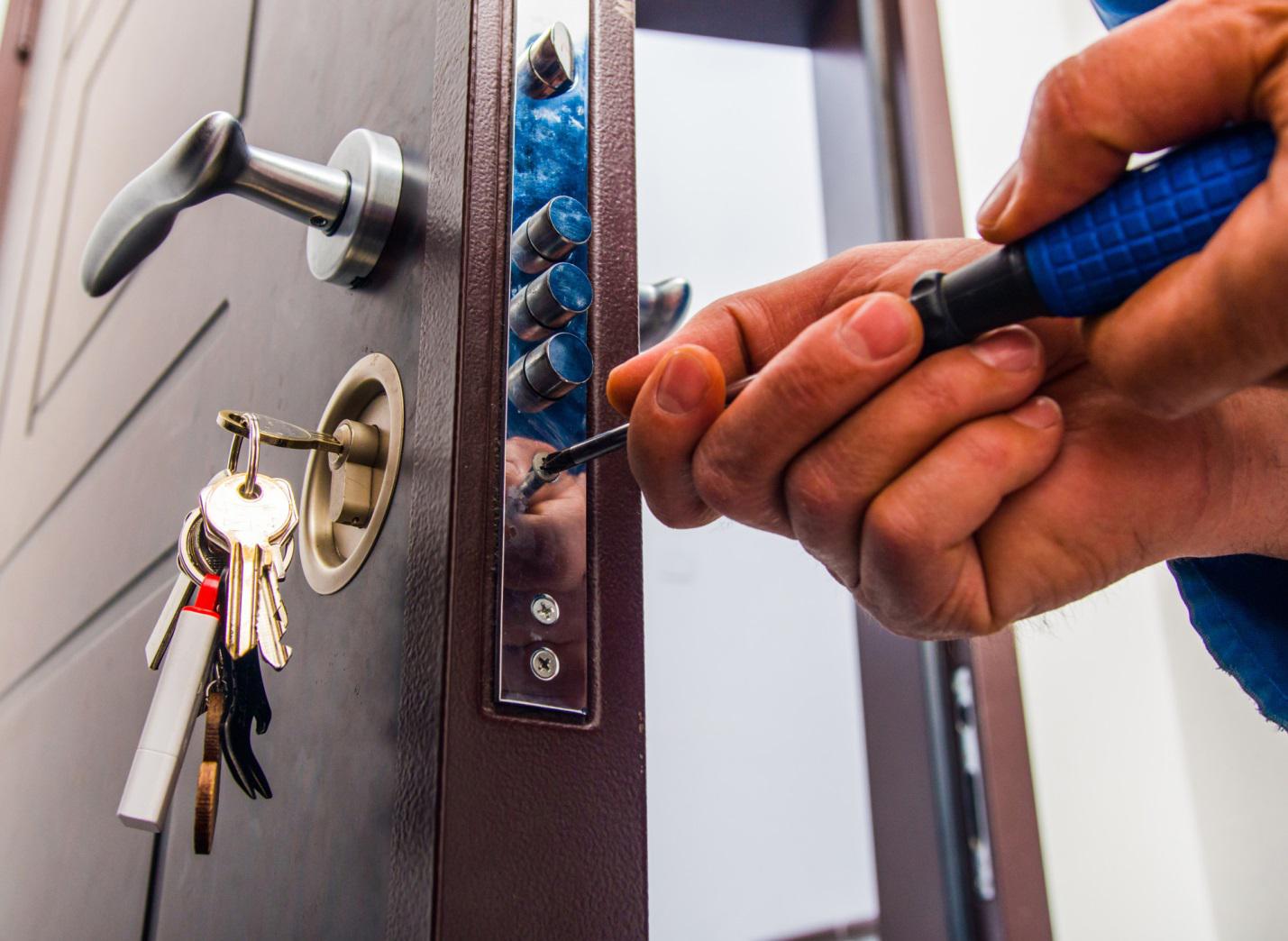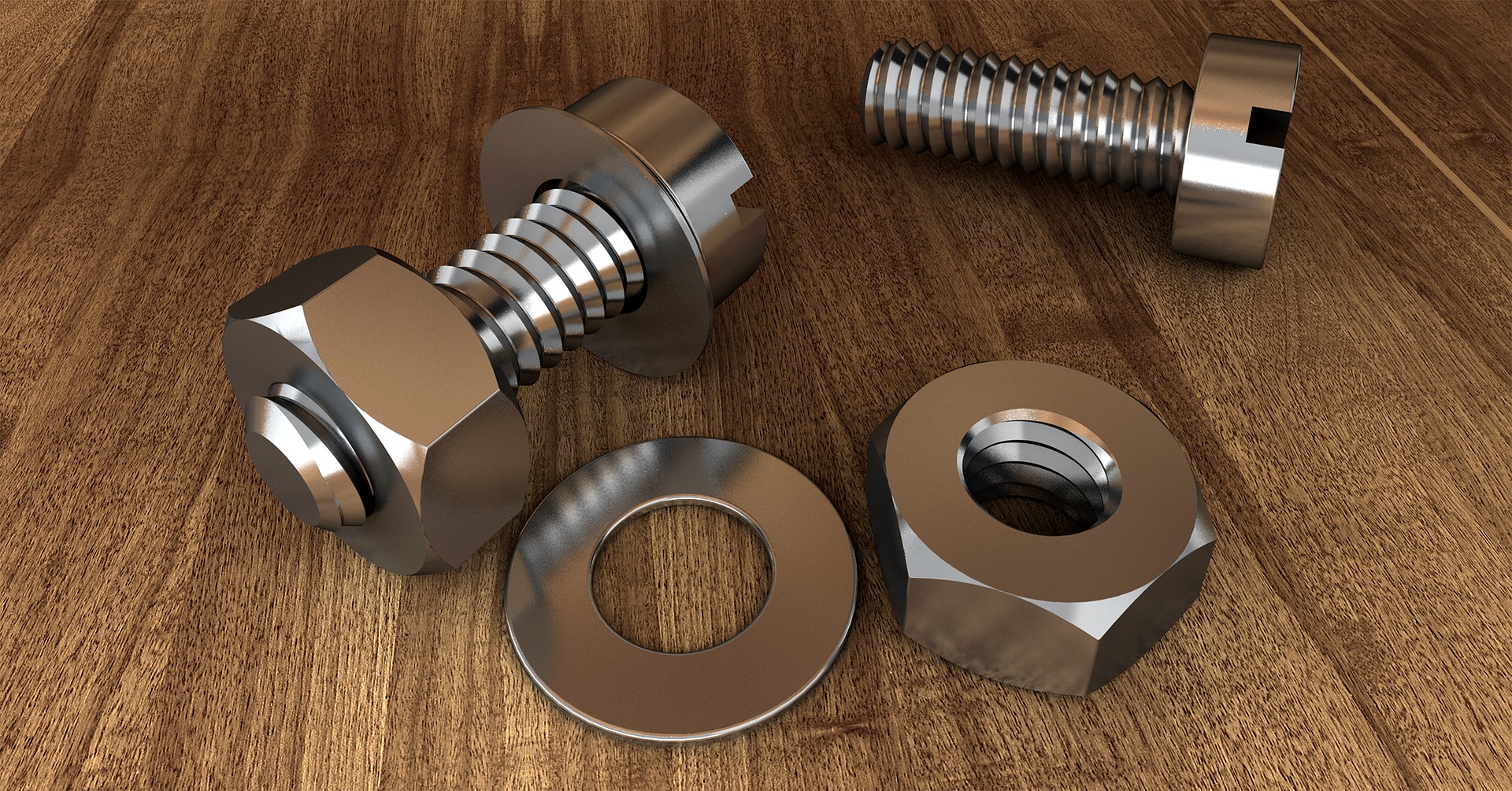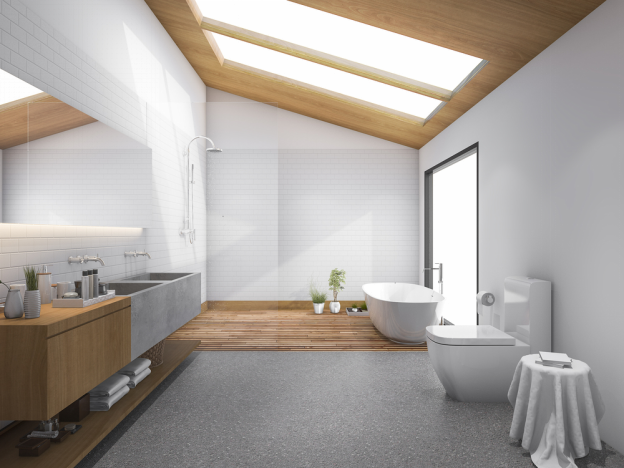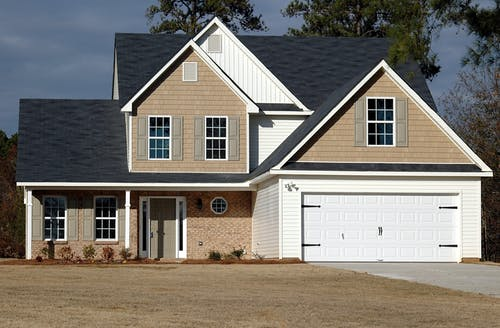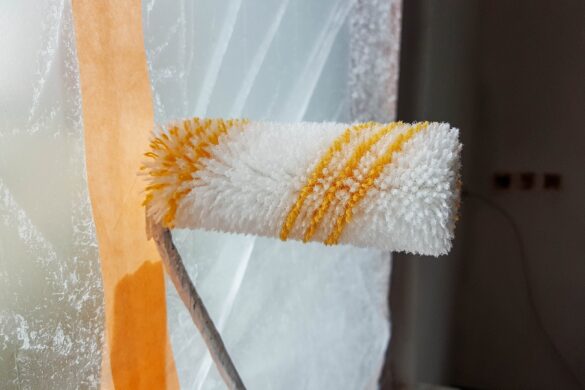
Flooring is one of the most important aspects of constructing a building. Floors are bound to take the maximum weight as well as have the most wear and tear. It’s important to put in the right investment to get the perfect flooring for your house without compromising on the class and looks. The common options are carpet flooring or wood flooring depending on the nature of the building.
If you choose wood flooring instead of carpet flooring or tile/stone flooring, you must be very cautious about selecting the right flooring type. There are many wood flooring options available in the market. Moreover, you’ve got to make the right choice between choosing solid hardwood flooring and engineered hardwood flooring.
What’s the difference between Solid Hardwood and Engineered Hardwood?
Before we get into the details of solid vs. engineered hardwood and how to choose them for your house, let’s try to understand more about Solid hardwood and Engineered hardwood.
Solid hardwood is made from a single type of tree (solid hardwood). Engineered hardwood means it is not manufactured just from 100% wood. It has a top layer of real hardwood and base layers that are made from three or more layers of High-Density Fiberboard (HDF) or Medium Density Fiberboard (MDF) that are bonded together under high heat and pressure.
Manufacturing Process
Now that we know what a solid hardwood and an engineered hardwood, let’s take a look at how they are manufactured.
Solid Hardwood Flooring
This flooring is made out of one solid piece of hardwood. The hardwood is about 3/4th of an inch thick. The plank width starts at 5-inches and can reach 11-inches wide. During manufacturing, due to this thickness, the hardwood will be milled (sanded down) to an extent that it can easily cover the complete square area of the house. The wood species used in solid hardwood flooring are maple, white oak, red oak, and pine.
Engineered Wood Flooring
Engineered wood has become more prominent over the last few years as a substitute for solid wood. The majority of the newly built houses and condos in the United States and Canada sport the flooring made from engineered wood.
Engineered wood flooring is actually a layered composite – the top layer is made of 100% real wood (oak wood). The base layer is also wood and in the middle, there are 5-7 layers of plywood in criss-cross directions. The standard thickness ranges from 3/8th – inch to – inch. The plank sizes start at 5-inches wide and the standard width ranges from 3 ¼-inch. This type of flooring is also referred to as engineered oak flooring. Engineered wood floors are made from Brazilian cherry, red oak and hickory wood species.
Making the right choice of flooring
While both solid wood flooring and Engineered Oak Flooring give the same look, there are few key differences that you must keep in mind when it comes to composition and performance. It’s important that you make the right investment in your flooring project. Let’s get deeper into the different aspects of each of these types of flooring and how to choose the best one.
Sanding
Solid wood flooring is made out of a single piece of hardwood. Depending on the size of the house, the hardwood can be sanded multiple times and reshaped to fit the entire house. Too much of sanding of solid wood will also cause the wood to become thin, thereby affecting the structural integrity of the house.
Engineered oak flooring can be sanded only a few times. Once the upper hardwood is gone, it’s just plywood in the middle and will definitely impact the integrity of the building.
Environmental Resistance
Environmental changes play a crucial role in the choice of flooring for your house. Let’s consider environmental factors such as humidity, moisture content in the air, and other critical parameters.
Solid Hardwood Flooring
In summer, when there is moisture content in the air, the hardwood will expand. On the contrary, in winter, when the weather is dry, the hardwood will shrink. Therefore, it’s very important to leave extra space when setting the hardwood flooring to account for this expansion and contraction. Additionally, some flooring companies also suggest using a humidifier in the house. This will reduce the moisture level from the air and keep it at a steady rate.
Engineered Hardwood Flooring
Engineered oak flooring, given its layered design, has a stronger tolerance and resistance for humidity and moisture changes in the atmosphere. The layers will move in the crisscross direction and therefore there is little movement under the flooring. Engineered flooring will not shrink or expand, therefore, there are fewer chances of the impact of environmental changes on engineered hardwood flooring.
Durability
Durability refers to how much stress the flooring can handle given its thickness.
Solid Hardwood Flooring
In general, if the solid flooring is well maintained, the flooring is capable of lasting for decades with just the required maintenance. However, the durability factor takes a serious hit if the moisture is too high in the area. The main reason for this is that hardwood is completely organic. This also affects the flooring resale value. Ensure that you put in proper maintenance for your solid flooring.
Engineered Hardwood Flooring
Given the thickness of engineered flooring, the flooring will get chipped off when there’s a heavy stress on the flooring. But the ability to stay strong during moisture weather, conditions gives the engineered flooring a better rating. Also that it uses 100% real wood, resale value rates are comparatively higher with engineered flooring.
Cost
The cost of wood flooring narrows down to factors like plank thickness, species of wood used in the plank. Engineered wood flooring is more affordable than hardwood flooring – why? A solid, single piece of wood will cost more when compared to a layered composite.
Solid Hardwood flooring costs range between $8 to $15 per square foot. Engineered hardwood flooring depends on the thickness of the layer (veneer layer) that is used. The cost ranges between $3 to $5 per square foot for a thin layer, $5 to $9 per square foot for a medium veneer layer, and $10 to $14 for the thickest engineered wood. Keep in mind that if you opt for the thickest wood, you will be paying more than the cost of solid hardwood flooring. Don’t forget to buy the additional 10-15% of wood to cover any mistakes and for future repairs. Opting for engineered flooring will bring down the cost and still get you the perfect look for your house.
Installation
Choosing the flooring for your house is one half of the puzzle. The other half is getting it installed in your house. Getting the flooring installed perfectly can be challenging even for an experienced person from a flooring company. It’s recommended that you get your flooring done with the help of a professional with commendable experience on the job.
Prerequisites
Before you get started with installing the solid hardwood flooring, make sure you prepared the subfloor correctly. If you do not prepare the subfloor in the correct way, this can cause damage to your new hardwood floor. Also ensure that the subfloor is clean, dry and moisture free! If
possible, use a humidifier in the room to remove the humidity.
Solid hardwood flooring installation
Solid hardwood flooring can be done using the nailing or stapling technique only. It is not an easy job to do solid hardwood flooring, therefore it is recommended to get a contractor with experience to get the job done for you.
Engineered hardwood flooring installation
You can do this in three different ways – Float installation method that’s very simple and easy to do it by yourself. You don’t need glue, nails or staples for this method. You can get this flooring easily installed on a dry subfloor.
The other technique is to use glue or stapler. The recommended method is to have a contractor to get your installation done with precision as it will involve challenges.
Acclimatisation after Installation
Once you have done your flooring, you need to give it some time to get accustomed to the weather, temperature and other factors that will influence it in the years to come. For solid wood flooring, you need to leave it for a period of at least 7 days after it has been finished. Engineered flooring needs more than 72 hours (3 days) to set itself completely.
Remember to leave an expansion gap around the corners of the room so that the floor has the necessary space for it to expand due to moisture in the air.
Location of Installation
This is one of the definite deciding factors that will help you choose the type of flooring for your house. It’s best to use solid hardwood flooring in the hallway, living area, bedrooms, walkways, and the dining rooms. Considering using solid hardwood flooring in the kitchen? Make sure you have waterproof mats on top of the flooring that can suck up all the water, especially near the kitchen sink and areas with water flow.
You must avoid using solid flooring in bathrooms and basement level buildings. The reason being the increased moisture and dampness that reduces the durability aspect of the flooring. On the contrary, you can use engineered flooring in challenging places like the kitchen and the basement floors (areas with humidity and moisture).
Both the types of floorings come with a perfect finish that will aesthetically improve the look and feel of your house. All that it depends on is the proper installation and maintenance of the flooring.
Pre-Finished and Site-Finished Flooring: Which one is preferred?
Now that you have chosen the type of flooring for your house, you need to make a decision between choosing pre-finished flooring and site finished flooring.
Pre-Finished Flooring
Pre-finished flooring has the finish applied in the factory before the flooring reaches the suppliers. Installing a prefinished flooring will take very less time compared to site-finished flooring and cuts the labor cost significantly. Since the flooring is manufactured under factory conditions, you will see a perfect and smooth finish.
Disadvantages of Pre-Finished Flooring
Though you save on labor costs, since expensive wood is used for prefinished flooring, you will pay almost the same price as that of site-finished flooring.
To avoid sharp edges and reduce damage during transit, the edges are normally beveled. Therefore, you get beveled edge corners on your floors.
If you want to add fancy flooring options during installation, this will require sanding of the flooring resulting in a reduced lifetime of the wood.
Site-finished Flooring
Site-finished flooring is done completely on the site – from sanding to finishing. Cheaper quality wood is used, and you can easily add fancy flooring options during the installation.
Disadvantages of Site-Finished Flooring
Installation takes double the time of pre-finished flooring resulting in more labor costs
You may not get a perfectly hard and smooth flooring as that of a pre-finished floor.
It takes time for the finish to dry before you can actually walk on it (about 12 hours). This gives a chance for micro dust particles to settle on the wood and leave “dust” marks.
You must clean the floor thoroughly to remove all the dust due to sanding
As you can see, site-finished floor stands the better chance given the reduced labor cost and faster installation. And, it’s quite difficult to match the quality of a pre-finished floor with a site-finished floor. But well, opinions vary and that’s completely acceptable.
Where can solid hardwood flooring be used?
You can use solid hardwood flooring in your house for the first floor and second-floor areas such as living rooms, bedrooms, hallway, dining rooms, kitchens (with precautions). If you are using in the kitchen area, please make sure that you have the necessary waterproof mats that can suck water without letting it into the flooring.
Where can engineered hardwood flooring be used?
Engineered oak flooring can be used in all the areas as mentioned above for solid wood flooring. In addition, engineered wood flooring can be used in basements, over concrete floorings where there are chances of high moisture content. You cannot use solid hardwood in these areas as there are chances for the flooring to expand and contract to the temperature fluctuations.
Why should I choose Solid wood flooring?
We have seen the factors that you should consider when you opt for flooring in your house. Let’s see the advantages of choosing solid wood flooring over the engineered wood flooring.
Resanding and refinishing the flooring multiple times. Say, there is a scratch on the floor, or you want to change the color of the flooring in the hallway alone, it’s easy to get the job done.
Setting up a solid wood flooring for your house is less expensive when compared to engineered oak flooring. You may find cheaper versions of engineered wood, but comparatively, you will spend lesser with a solid wood flooring.
With solid wood flooring, you have an option to buy either pre-finished wood or un-finished wood depending on your requirement for the house
If there is any damage to solid wood flooring, repairing it is pretty much easy. Say, a portion of the floor has the damage, you can replace that portion easily.
Why should I choose Engineered wood flooring?
Here’s the list of advantages of choosing engineered oak flooring over the solid wood flooring.
You can use this type of flooring across rooms where you cannot use the solid wood flooring. You need not worry anymore about the weather and temperature fluctuations.
Even if your sub-floor is not plywood (say, concrete), you can use engineered wood flooring on top.
You get a wide range of choice when it comes to the colors and the tones, from light to dark. Engineered oak flooring is available in all the types of available oak wood in the market. You can get different grades of wood and colors in the market, and choose according to your convenience.
You can resand engineered wood just the same way you would do with solid wood flooring. If there is a heavy footfall in your house, you can opt for an engineered wood flooring with a stronger top layer. By opting for this, you can keep your flooring look almost new with just minimum resanding and giving it a finishing touch.
Engineered wood can also be used in basement areas. Engineered hardwood will be flexible and will be the best choice given the presence of moisture in the basement.
If you are to choose between solid vs engineered wood flooring, you need to first ask these questions –
- What is your subfloor type? If you have a concrete basement, engineered flooring is the only option. If the subfloor is plywood, you can choose from either solid or engineered wood flooring.
- Is your place more humid or less? Do you have a humidifier in place? – If humidity is a big question, don’t go with solid flooring. You will face the problems of expansion and contraction during the different weather conditions. This will degrade the quality of your flooring.
- What will be the footfall in my house? If there is a heavy footfall, you can opt for the engineered oak flooring. If it is just minimal footfall and you have taken care of the other requirements, you can opt for solid wood flooring.
If you are concerned about long time usage, you can definitely opt for the solid wood. It is value for money for a longer duration. If you really want to have the look of a perfect oak wood finish, you can opt for the engineered oak flooring. Especially in rooms where you cannot have solid flooring, you can invest in engineered flooring! But, you may not get the long-term return and value for money that you can earn with the solid flooring. Therefore, the choice is yours and it depends solely on your preference to opt for either of the two types of wood flooring.
